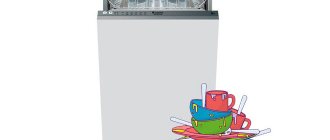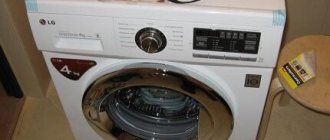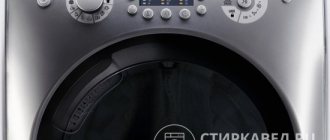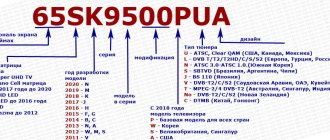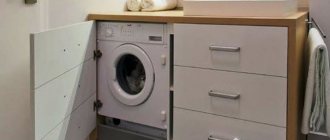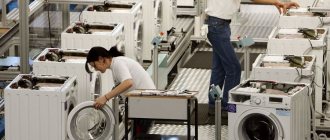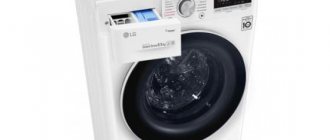A washing machine with a steam function appeared on the Russian market relatively recently. Therefore, many have no idea what this technique is and its washing process itself. Although manufacturers of steam washing machines assure that this technology for processing laundry is not only economical, but also effective, we still suggest that you take a more specific look at all the pros and cons and understand the question of what steam washing is.
Steam line in dry cleaning
A steam line in a dry cleaner is a process pipeline through which steam is supplied from a steam generator or boiler room to consumers. In this publication, we take as a basis that we are considering a small steam line connecting the steam generator and consumers. We'll talk about boiler houses and steam facilities next time.
The steam line consists of a steam supply line from the steam generator and a pipeline through which the condensate moves.
What is condensate?
Condensate in the steam line is former steam. Steam that has given up its energy to the consumer, or, as they say, “worked out.” Condensation forms directly in the steam line, as well as in consumers - heated surfaces of ironing tables and presses, heat exchangers of steam dummies and drying machines.
One of the reasons for writing this publication was correspondence on the design of a condensate line and the operation of process equipment.
Steam washing: how it works
Let's take a closer look at what a steam washing machine is. Already from the very name “steam” we can conclude that its main washing function is steam treatment, which means that the unit itself is designed somewhat differently, in contrast to the traditional washing machine that is familiar to everyone. How does the principle of its operation work?
A steam washing machine has an outlet at the top of the hatch through which steam flows through a tube into the drum. It is produced by a steam generator, which is located at the back of the washing machine.
What is the benefit of the steam function? You can quickly refresh and even disinfect your items without getting them too wet and without using detergents. This technique will be especially useful for families with allergies and small children. Hot steam perfectly eliminates microbes and bacteria existing both on the surface and deep in the tissue fibers, and therefore the accompanying unpleasant odor. Steam treatment is accompanied by a temperature in the drum of 550 °C, which is much more effective than simply boiling in water. In addition, steam-treated items will not have to be ironed due to the complete absence of wrinkles, which is something that laundry washed in a regular SMA cannot boast of.
The dimensions of steam engines will also allow you to refresh bulky items such as blankets, pillows and blankets. This means that you can do this kind of washing at home without spending on dry cleaning. Overloading the machine drum is eliminated thanks to the available laundry weighing function, which is displayed on the touch panel.
A washing machine with a steam function will provide you with a wide choice of modes, as well as how you want to wash your clothes (in water and with detergents, with steam, to perform a hypoallergenic wash, economical when loading a small number of items, etc.). It all depends on which model you choose.
How to remove condensation from dry cleaning equipment?
The blog “Clothespin” received the following message:
Hello! Please tell me how you remove condensation from steam dummies, ironing tables, presses, and dry cleaning machines? And also, if anyone knows, approximately what volume of condensate is obtained from one steam mannequin per shift?
Each steam consumer in a dry cleaner must be connected to the steam and condensate (return) lines through condensate drains (filters, check valves, etc.). This is mandatory if you are paying for steam out of your own pocket. There are enterprises where the return flow is made without any condensate traps and the condensate is simply discharged into the street. But doing it wrong is extremely wasteful and unjustified.
Not the most obvious, but quite a spectacular example of the amount of heat and steam released into the atmosphere.
How much condensate is produced from one steam manikin per shift?
Based on the volume of condensate from the steam dummy, you need to look at a specific machine. The fact is that part of the steam leaves during purging (steam, air-steam mixture) and part is used to heat the heat exchanger. As a rule, there is little condensation there, because... the heat exchanger does not come into contact with a very cold environment. You can find the amount of condensate in the data sheet for the steam dummy.
Features of equipment with built-in steam generators
Dry cleaning equipment with a built-in steam generator has a number of features.
First of all, there is no need to extend steam and condensate lines to consumers. But it is necessary to extend the water supply from the water softening installation and organize a sewer system for purging the steam generator and discharging sludge from the steam generator into the sewer system. It is impossible to make such a sewer from plastic - only cast iron. Only hardcore!
Finishing equipment with built-in steam generators is less dependent on the location of the main steam generator - usually the steam line in dry cleaners does not exceed 10 meters. Otherwise, the steam will cool already in the steam part and either cooling steam or, if the thermal insulation of the steam line is poorly done, hot water will enter the consumers. Hence the problems of spitting irons, low operating speed of steam dummies and other difficulties.
Engineering solutions for a modern laundry room
In the room for washing and drying clothes, microclimatic parameters must be met. One of the main ones is ventilation. A sufficient amount of air circulation will provide not only comfort, but will also contribute to the rapid drying of washed clothes. It is also important to provide for the provision of various communications: consider the placement of water intake points and drainage of waste water. A mandatory requirement is the organization of heating.
According to DBN V2.5-67-2013, it is prohibited to install laundries in unheated premises.
Consultation for dry cleaning designers
Therefore, an appeal from designers who are just designing a dry cleaning/laundry facility is very appropriate - all the most important features can be laid down at the design stage and avoid problems and costs in the future.
We carry out sewerage design in a hotel complex. And in the basement of this complex there is a small laundry room with a dry cleaner, which has several washing machines, a dry cleaning machine, a stain removal table, a trouser steamer, a shirt steamer, an ironing table, and a press for collars and cuffs.
For all this equipment, the EPG-30 steam generator (without condensate return) was selected.
I was given a table with the diameters of the connections, and it listed the outlets from the laundry/dry cleaning equipment as “drainage”. I began to look into it and it turned out that these were just condensate releases. The customers, as I understand it, intended to dump it all straight into the sewer. But after reading the equipment passports that I found on the Internet, I realized that: firstly, if possible, it is necessary to reuse this condensate; secondly, condensate comes out of the equipment at a temperature of about 100 degrees, and without cooling to 40 degrees it cannot be thrown directly into the sewer.
In order for a customer to order a steam generator model with condensate return, it is necessary to understand how feasible and profitable it is, because it costs almost 2 times more.
In general, the design of steam and condensate pipelines refers to “process pipelines” and should be developed separately by specialists who have design experience in this field, which I will convey to the customers after review, but I just want to understand the issue and offer the customer some kind of solution.
For example, if the volume of condensate from the equipment is small, install a container, dump the condensate into it, cool it with water to the desired temperature, and only then dump it into the sewer.
And one more question, if you know, does condensate come out of the equipment under pressure? Is it possible to raise the condensate collection line above the condensate outlet from the equipment?
Advantages of a steam machine
The washing steam machine has a number of positive qualities that cannot be ignored. We recommend that you familiarize yourself with the advantages of this technique, namely, what is good about steam washing in a washing machine.
- Excellent washing quality, which is achieved using high temperatures. Steam treatment perfectly replaces functions such as boiling, soaking and pre-washing. Hot steam easily penetrates deeply into fabric fibers, which allows you to cope with even complex stains.
- You can even wash items made of fine synthetics, delicate fabrics, and those for which machine washing is generally contraindicated. In most cases, there is no need to pay for laundry and dry cleaning. In addition, brightly colored materials will not lose their brightness and original color, which often happens to them during normal washing and boiling.
- Some models have the ability to reload laundry, which is very convenient. All of them have at least 14 washing programs, plus individual functions such as weighing loads of laundry and others.
- Many have encountered such a problem with typical washing machines as breakdown due to overload. This can happen when the drum is frequently overloaded with laundry. Over time, the machine begins to wash poorly or stops working altogether due to stretching of the drive belt. In steam washing machine models, the typical belt drive has been replaced with a direct drive. This eliminates the possibility of most breakdowns, as well as vibration of equipment in working condition.
- By washing in a steam machine, you will save your time, energy, water, and the cost of detergents.
- You can always easily and quickly disinfect any item, from underwear to large bedding and soft children's toys. By the way, this is also convenient when buying new things that you don’t want to wash, but you need to get rid of possible surface dust and germs.
- It is possible, using the “Refresh” function, to quickly tidy up your stale, wrinkled clothes. After washing, items do not need to be ironed, and they dry quickly naturally. This is very convenient for residents of city apartments, where there is not much free space for hanging wet laundry.
- It should be noted that steam washing machines operate very quietly. You can wash even at night and it won’t bother anyone.
Why shouldn't condensate be discharged into the sewer?
To produce steam, prepared water is used - impurities are removed from the water using coarse and fine filters, the hardness of the water is also adjusted to the required condition, in some cases, iron impurities are removed from the water, for which, for example, water in the Moscow region is famous.
A water treatment station is installed in front of the steam generator, consisting of filters, an iron removal unit, and an ion exchange water softening system that replaces magnesium and calcium hardness salts with sodium ions. In some cases, membrane filters and reverse osmosis units are used. All this is in order to bring the water used to prepare steam to the desired condition.
Throwing such water down the drain is an expensive proposition. That's right - return this water to the feed tank and use it to prepare the next batch of steam.
To discharge condensate into the sewer, it is necessary to make the sewer from cast iron - only cast iron can withstand temperatures of 100 degrees. And the idea of cooling (diluting) the condensate with cold water before discharging it into the sewer does not seem so harmless either.
You will have to spend money on installing a container for dilution, and on installing a sewer system, and on softened water, which will be drained into the sewer system. Too many unnecessary actions and movements.
A steam generator without condensate return will not work in dry cleaning
Our reader mentioned in his question that the EPG-30 steam generator without condensate return was chosen and that the cost of a steam generator with a feed tank is twice as high as compared to the model without condensate return.
We open the Internet and look at the model of the EPG-30 steam generator. According to the website, such a steam generator costs 86,000 rubles. Compared to the cost of a dry cleaning machine, steam dummies, a collar and cuff press, and a trouser press, this is not such a big price and you can fork out for the purchase of a good steam generator with a nutrient tank for condensate return. Or give up the collar-cuff press and trouser mannequin - you can definitely live without them in dry cleaning conditions in a hotel.
Therefore, it is strongly recommended to purchase steam generators with a feed tank or a condensate return tank to organize a central steam supply to consumers in dry cleaning.
Is it possible to raise the condensate collection line above the condensate outlet from the equipment?
The condensate return line is drawn at a height of no more than 1.5 meters from the condensate exit point. When working with standard steam generators. providing a pressure of 4-6 bar, pay attention to the manufacturer’s recommendations and the length of the steam and condensate lines.
The pipeline provides for pressure losses along the length and in local resistances, therefore, in the case of long pipelines, the height of the condensate line can be reduced to 1 meter to the level of the condensate fittings.
The condensate line is made with a slope towards the feed tank. If you raise the line higher, there is a risk that there will always be water in the line and condensate from the equipment will not push through the line.
Engineers from the Clothespin blog team are ready to answer your questions regarding the organization of steam lines, methods of connecting equipment and other topics related to the operation of process equipment.
Not the most popular washing machine
Someone strives to save money when purchasing and is ready to be content with the basic, most necessary functions. All you need is a washing machine, nothing more. Someone is afraid of frequent breakdowns that will inevitably arise if the manufacturer loses sight of something when creating a drawing, when choosing materials, manufacturing parts, or when assembling equipment at the factory. It will be difficult to prove that you are right in this case.
It makes more sense to buy a simpler washing machine: in a birch grove, so to speak, there is more chance of getting lost than in three birch trees. For some, it is easier to limit themselves to a standard set of functions. Is it worth constantly thinking about how to wash each specific item in your wardrobe? Washing everything together if necessary, replacing it if necessary is also a good habit.
